#House extensions in North London
Photo

London Roofing Tile
Inspiration for a mid-sized timeless brown three-story brick exterior home remodel with a tile roof
#traditional#rear extension#north-west london#roof glazing#arts & crafts detached house in belsize park
0 notes
Photo

London Gravel Landscape
Design ideas for a mid-sized mediterranean partial sun backyard gravel garden path in spring.
#house extensions#top london architects#landscape design#north london architects#landscape#residential architects london#architectural practices london
1 note
·
View note
Video
undefined
tumblr
Designing a Modern Flat Roof for Your Home | Combit Construction
Are you designing a flat roof for your home? Read our complete guide to know about the pros & cons of flat roof design while designing your home.
1 note
·
View note
Photo

Concrete Pavers in London
A picture of a small, modern, concrete-paved, formal garden in the springtime.
#self build architects#north london architects#architects east london#architects west london#architectural practices london#house extensions
0 notes
Text








Here we have a selection of colour photographs of Piccadilly Circus from the 1950s 60s and 70s.
Piccadilly Circus connects to Piccadilly, a thoroughfare whose name first appeared in 1626 as Piccadilly Hall, named after a house belonging to Robert Baker, a tailor famous for selling piccadills or piccadillies, a term used for various kinds of popular collars of the time. The street was known as Portugal Street in 1692 in honour of Catherine of Braganza, the queen consort of King Charles II but was known as Piccadilly by at least 1743. Piccadilly Circus was created in 1819, at the junction with Regent Street, which was then being built under the planning of John Nash on the site of a house and garden belonging to a Lady Hutton, the intersection was then known as Regent Circus South (just as Oxford Circus was known as Regent Circus North) and it did not begin to be known officially as Piccadilly Circus until the mid 1880's with the rebuilding of the Regent Street Quadrant and the construction of Shaftesbury Avenue. In the same period the circus lost its circular form.
The Shaftesbury Memorial Fountain or Eros at Piccadilly Circus was erected in 1893 to commemorate the philanthropic works of Anthony Ashley Cooper, 7th Earl of Shaftesbury. It was removed from the Circus twice and moved from the centre once. The first time was in the mid 1920s, so that Charles Holden's new tube station could be built directly below it. The fountain returned in 1931. During the Second World War, the fountain was removed for the second time and replaced by advertising hoardings. It was returned again in 1948. When the Circus underwent reconstruction work in the late 1980s, the entire fountain was moved from the centre of the junction at the beginning of Shaftesbury Avenue to its present position at the southwestern corner.
Piccadilly Circus tube station was opened on 10th March 1906, on the Bakerloo line, and on the Piccadilly line in December of that year. In 1928, the station was extensively rebuilt to handle an increase in traffic. The junction's first electric advertisements appeared in 1910, and from 1923 electric billboards were set up on the facade of the London Pavilion. Electric street lamps interestingly however did not replace the gas ones until 1932. The circus became a one-way roundabout on 19th July 1926 and traffic lights were first installed on 3rd August of that year.
#london history#london life#street scene#social history#transport#piccadilly#piccadilly circus#1900s
176 notes
·
View notes
Text
Written in the Stars
Angst - Regulus Black x F!Reader
Word count: 1,163
I've been quite busy with work lately, sorry for the short one shot!
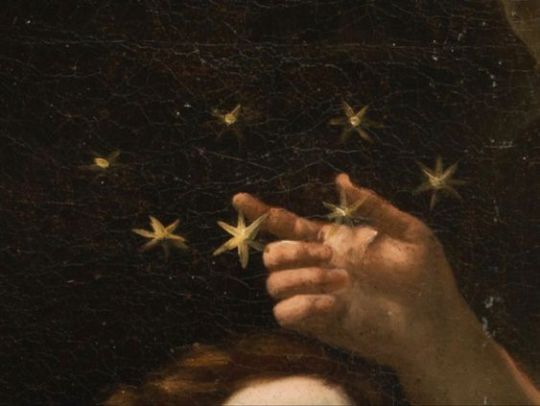
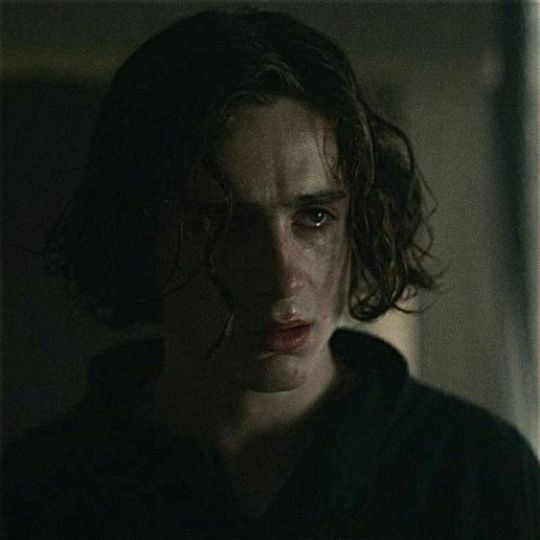
Before the summer of 1979, Regulus Black had a decently average school life. The boy found solitude in the Astronomy tower north of the castle. Far from other students and yet was drawn to one particular witch. Y/N L/N was unlike any other wizard at the school. What she lacked in social prowess, she bloomed in intimate confessions. The pair found themselves forever intertwined, always in the same class, always sat next to each other, always in the library at the same time every week. It was only a matter of time until they their time beyond academia branched into bi-weekly escapades in the Astronomy tower. At first, Regulus found it to be a hindrance to his peaceful hobby. But overtime, he craved Y/N’s presence at the mere sight of a telescope. He could feel his skin come out in hives when they were a part, he could not breathe the air that she did not exhale. In her regular outlandish character, Y/N stuck to him like glue the moment they both step foot in the tower. Their silent haven, where the heavens and stars above were their only witness.
Tracking the stars and journeys of the planets were a veil for these evenings, both sat shoulder to shoulder, hand in hand, fingers interlaced as they gaze above at the open sunset. A beautiful scene unlike any other, that would only bloom by their love.
Y/N knew of Regulus’ dangers and tormenting life, the walls in his mind that he had built from steel and brick would only come down for her. She was determined to be his pillar, his guiding light. He was determined to never harm her, to always protect her no matter the cost.
“Regulus, do you think you could, leave Grimmauld Place? Like your brother?” The H/C haired witch mumbled. These conversations were always met with a blank stare, the discussion of his heritage was met with destain from her partner.
“You know it’s not that easy. That bastard ran off because he had a choice, I don’t.”
“Maybe… You could choose me. My mother won’t mind another mouth to feed, really! She loves to cook! She always makes like twelve times the recommended portion sizes! You could come with me next week, when we go back to London. My dad will drive us!” Y/N rambled, trying to ease the tense air between them. Regulus only delicately rubbed the back of her hand, his breathing steadied at the touch of Y/N skin.
“…Perhaps mon cœur. But there’s too much expected of me this year, now that Sirius is gone. The pride and nobility of the Black family lies upon my shoulders.”
Y/N was never fond of how her partner spoke so formally around her, the extension of his upbringing bled even into his everyday behaviour. She just wanted him to relax around her. Because to her, Regulus was not the spare turned heir. They weren’t even wizards in her eyes. Just two kids in love who want to spend every waking hour together.
“I know that, but what I’m trying to say is that, I’m always here for you Reg!” She turns her head to face him, his eyes slightly widened like a deer in headlights, she grips his hand with both of her own, the veins along his boney hands were pumping his blue blood rapidly, she could taste his anxieties.
“I just don’t want to hurt you.”
“Then hurt me. Reggie, I’m not the delicate doll you think me to be. I am here for you. Because I want you. If it means I get hurt just for being with you then so be it. Because you are who I care about and love. Screw those mad preaching twats, I just want you.” He did not need to speak, Y/N knew him from the way he breathes, speaks and walks. She knows, all that Regulus had to do was come to her.
Before nightfall, the two kissed a goodnight blessing and parted ways to their respected houses. Despite his standing as a Slytherin in Hogwarts, Y/N did not care for the stares from his fellow green scaled classmates. But Regulus Black was not one for social rejection. He had kept his relationship with Y/N as discreetly as he can, only ever brushing his hand against hers for a millisecond whenever they passed in the halls. He made sure that their meetings could easily be read as merely coincidence. But the cunning snakes of his house were not foolish. They know how to plot and scheme in secret. To them, Regulus was obvious and they hated how he reeked of Y/N’s perfume every time he stepped foot in the common room. He would persistently deny that he ever cared for what others thought of him, he knew that he mustn’t tarnish the Black name. Toujours pur. Since Sirius’ excommunication from the family, he represents the family name in Hogwarts. He is to carry his family’s reputation for the future of the wizarding world. He knew the weight that he must carry.
But Y/N was everything he ever wanted, and everything that his family hated. She was a Gryffindor, she lacked any class or etiquette, and most of all, she was muggle born. He cursed the stars for shining their light towards her, he did not wish to have a beacon of light, he had finally accepted that anchor that ties him to the darkness. Yet there she was, a beam of hope that was merely inches away from his grasp. If he could only reach out, maybe this summer he could escape his destiny.
That night before he could even shut his eyes, a familiar owl perched on the distant window sill of the dungeon. A letter flew down from the crack of the window, and landed in front of him, the parchment was coarse, his name scribbled on with black ink and the recognisable stamp from his home. The Black sigil only meant one thing. Upon opening it, there was nothing else written on it other than the words:
You will leave for home tomorrow morning.
Before he could say his goodbyes, he wrote his final letter to Y/N L/N.
Mon cœur,
This arrangement has been the pleasure of a lifetime. But we are still from different worlds. Do not come for me, do not reach out to me.
I will always be grateful for what we had.
Je t’aime, jusqu’à mon dernier souffle.
R.
Regulus did not take the Hogwarts Express back to London with Y/N like they had planned. Regulus Black’s destiny did not lie in his hands, he couldn’t grasp whatever life rope Y/N L/N dangled in front of him. Regulus Black knew that the stars only charted towards his sinful fate. Regulus Black never got to board the Hogwarts Express ever again.
#harry potter#regulus black#the marauders era#the marauders fanfic#regulus black x reader#regulus black angst#regulus black fanfic#timothée chalamet#harry potter fanfiction#harry potter fandom#hp marauders
81 notes
·
View notes
Photo

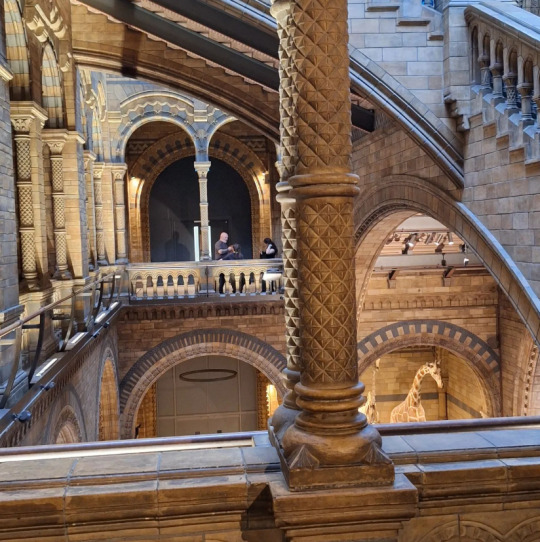
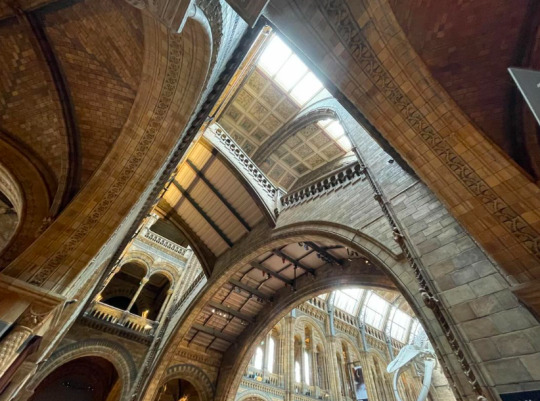
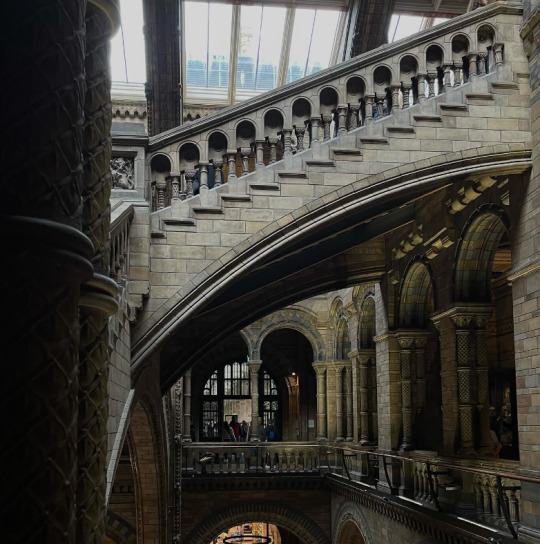
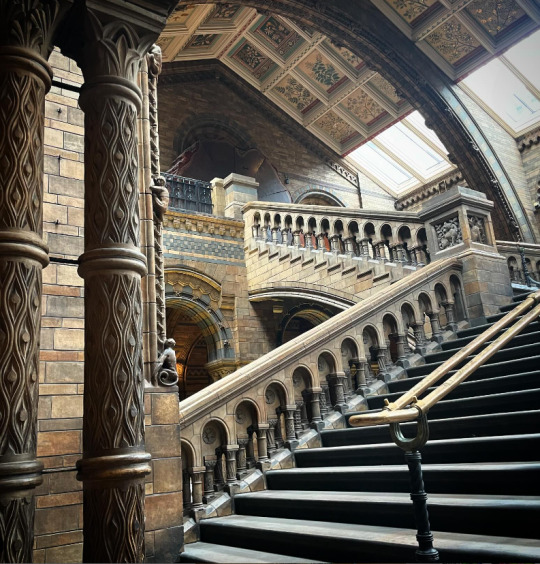



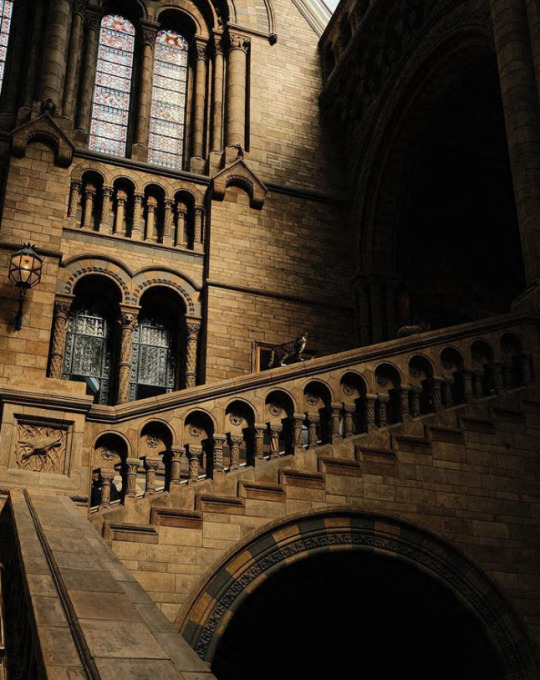
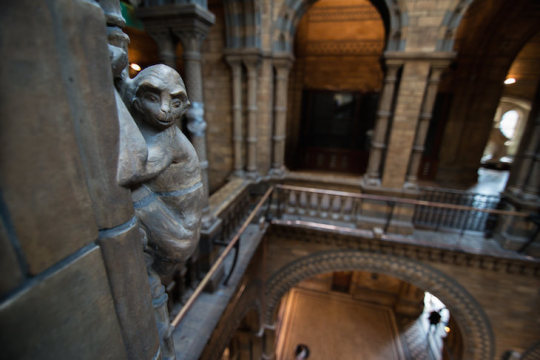

Natural History Museum - London
The Museum first opened its doors on 18 April 1881, but its origins stretch back to 1753 and the career of Sir Hans Sloane, a doctor and collector. Sloane travelled the world as a high society physician. He collected natural history specimens and cultural artefacts along the way. After his death in 1753, Parliament bought his extensive collection of more than 71,000 items, and then built the British Museum so these items could be displayed to the public.
In 1856 Sir Richard Owen - the natural scientist who came up with the name for dinosaurs - left his role as curator of the Hunterian Museum and took charge of the British Museum’s natural history collection. Unhappy with the lack of space for its ever-growing collection of natural history specimens, Owen convinced the British Museum's board of trustees that a separate building was needed to house these national treasures. He drew-up a rough architectural plan in 1859 entitled 'Idea of a Museum of Natural History'. The plan was later referred to by architect Alfred Waterhouse in the design of the Natural History Museum.
In 1864 Francis Fowke, the architect who designed the Royal Albert Hall and parts of the Victoria and Albert Museum, won a competition to design the Natural History Museum. However, when he unexpectedly died a year later, the relatively unknown Alfred Waterhouse - a Quaker architect from the north of England - took over and came up with a new plan for the Museum. Waterhouse used terracotta for the entire building as this material was more resistant to Victorian London's harsh climate. Construction began in 1873, and the result is one of Britain’s most striking examples of Romanesque architecture — considered a work of art in its own right and has become one of London's most iconic landmarks.
Owen's foresight has allowed the Museum to display very large creatures such as whales, elephants and dinosaurs, including the beloved Diplodocus cast that was on display at the Museum for 100 years. He also demanded that the Museum be decorated with ornaments inspired by natural history. And he insisted that the specimens of extinct and living species kept apart at a time when Charles Darwin’s theory of evolution was revealing the links between them. Along with incorporating Owen’s ideas into his plans, Waterhouse also designed an incredible series of animal and plant ornaments, statues and relief carvings throughout the entire building – with extinct species in the east wing and living species in the west. Waterhouse sketched every one of these sculptures in great detail, even asking Museum professors to check the scientific accuracy of his drawings, before creating the fantastic decorations that complement the Museum’s exhibitions. While the building reflects Waterhouse’s characteristic architectural style, it is also a monument to Owen’s vision of what a museum should be. In the mid-nineteenth century, museums were expensive places visited only by the wealthy few, but Owen insisted the Natural History Museum should be free and be accessible to all.
The Museum took nearly eight years to build, and moving the collections from the British Museum in Bloomsbury was a huge job. Relocating the zoological specimens, which included huge whale bones and taxidermy mammals, took 394 trips by horse and cart spread over 97 days. The Natural History Museum finally opened in 1881. The building’s decorative and Romanesque style by Waterhouse is reminiscent of medieval European abbeys, but it is also a monument to Owen’s vision of what a museum should be: the world’s largest and finest institution dedicated to natural history.

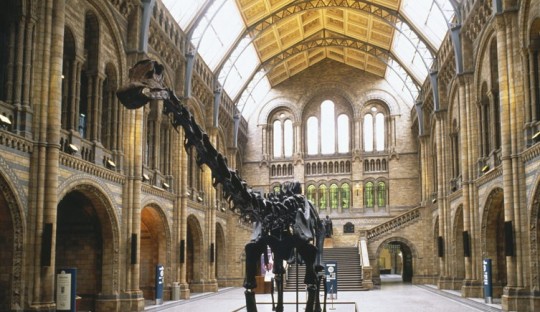

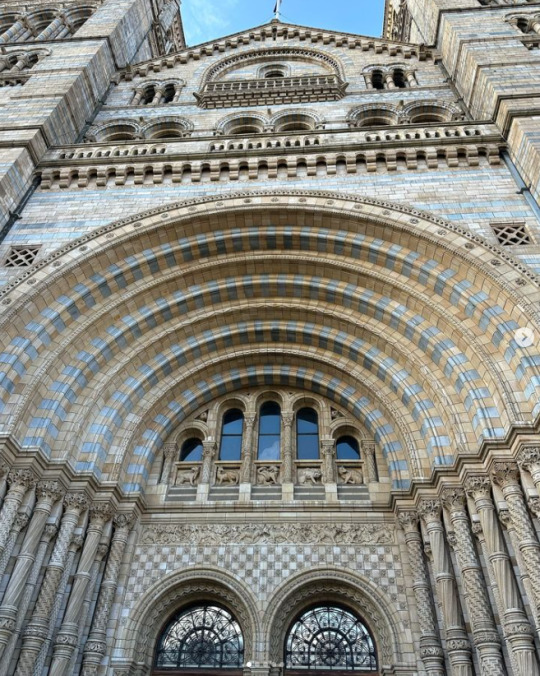
https://www.nhm.ac.uk/about-us/history-and-architecture.html
https://www.nhm.ac.uk/visit/virtual-museum.html
#other's artwork#architecture#Romanesque#Alfred Waterhouse#Sir Richard Owen#terra cotta#Natural History
65 notes
·
View notes
Text
A walk through Bengal's architecture
Bengali architecture has a long and rich history, fusing indigenous elements from the Indian subcontinent with influences from other areas of the world. Present-day Bengal architecture includes the nation of Bangladesh as well as the Indian states of West Bengal, Tripura, and Assam's Barak Valley. West Bengal’s architecture is an amalgamation of ancient urban architecture, religious architecture, rural vernacular architecture, colonial townhouses and country houses, and modern urban styles. Bengal architecture is the architecture of Wind, Water, and Clay. The Pala Empire (750–1120), which was founded in Bengal and was the final Buddhist imperial force on the Indian subcontinent, saw the apex of ancient Bengali architecture. The majority of donations went to Buddhist stupas, temples, and viharas. Southeast Asian and Tibetan architecture was influenced by Pala architecture. The Grand Vihara of Somapura, which is now a UNESCO World Heritage Site, was the most well-known structure erected by the Pala rulers.

The Grand Vihara of Somapura
According to historians, the builders of Angkor Wat in Cambodia may have taken inspiration from Somapura. Bengal architecture became known for its use of terracotta due to the scarcity of stone in the area. Clay from the Bengal Delta was used to make bricks.
The temple architecture has distinct features like the rich wall decoration, often known as the terracotta temples, which was one of the remarkable elements of Bengali temple architecture. The double-roofed architecture of thatched huts was replicated by Bengali temples. Square platforms were used to construct the temples. Burnt brick panels with figures in geometric patterns or substantial sculptural compositions served as the temples' adornment.

Dochala style
These served as models for many temples that were built in undivided Bengal. Construction materials used in ancient times included wood and bamboo. Bengal has alluvial soil, so there isn't a lot of stone there. The bricks that were utilized to build the architectural components were made from stone, wood, black salt, and granite. Bengal has two different types of temples: the Rekha type, which is smooth or ridged curvilinear, and the Bhadra form, which has horizontal tiers that gradually get smaller and is made up of the amalaka sila. Mughal architecture, including forts, havelis, gardens, caravanserais, hammams, and fountains, spread throughout the area during the Mughal era in Bengal. Mosques built by the Mughals in Bengal also took on a distinctive regional look. The two major centers of Mughal architecture were Dhaka and Murshidabad. The do-chala roof custom from North India was imitated by the Mughals.

Jorasako thakurbari
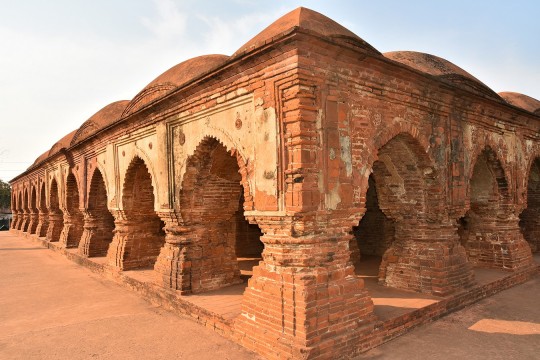
The Rasmancha is a heritage building located at Bishnupur, Bankura district, West Bengal.
Influence of the world on Bengal architecture: Although the Indo-Saracenic architectural style predominated in the area, Neo-Classical buildings from Europe were also present, particularly in or close to trading centers. While the majority of country estates had a stately country house, Calcutta, Dacca, Panam, and Chittagong all had extensive 19th and early 20th-century urban architecture that was equivalent to that of London, Sydney, or other British Empire towns. Calcutta experienced the onset of art deco in the 1930s. Indo-Saracenic architecture can be seen in Ahsan Manzil and Curzon Hall in Dhaka, Chittagong Court Building in Chittagong, and Hazarduari Palace in Murshidabad.
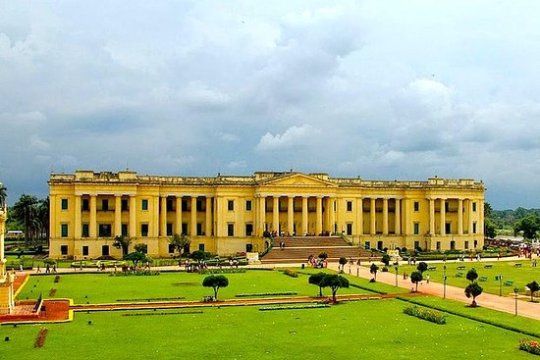
Hazarduari Palace in Murshidabad
The Victoria Memorial in Kolkata, designed by Vincent Esch also has Indo-Saracenic features, possibly inspired by the Taj Mahal. Additionally, Kolkata's bungalows, which are being demolished to make way for high-rise structures, have elements of art deco. The 1950s in Chittagong saw a continuation of Art Deco influences. The Bengali modernist movement, spearheaded by Muzharul Islam, was centered in East Pakistan. In the 1960s, many well-known international architects, such as Louis Kahn, Richard Neutra, Stanley Tigerman, Paul Rudolph, Robert Boughey, and Konstantinos Doxiadis, worked in the area.

The Jatiyo Sangshad Bhaban
This iconic piece of contemporary Bangladeshi architecture, was created by Louis Kahn. Midsized skyscrapers dominate the cityscapes of contemporary Bengali cities, which are frequently referred to as "concrete jungles." With well-known architects like Rafiq Azam, architecture services play a key role in the urban economies of the area. Overall Bengal architecture was influenced by various contemporaries of their time and continues to evolve.

Gothic architectural style seen in St. Paul's Cathedral in Kolkata.

Zamindar era buildings in ruin.

Belur Math in Howrah
#bengali#bangla#west bengal#bangladesh#tripura#assam#desi#বাংলা#india#architecture#tales#bengal architecture#history#kolkata#international#technology#information#temple#asia#bricks
183 notes
·
View notes
Text
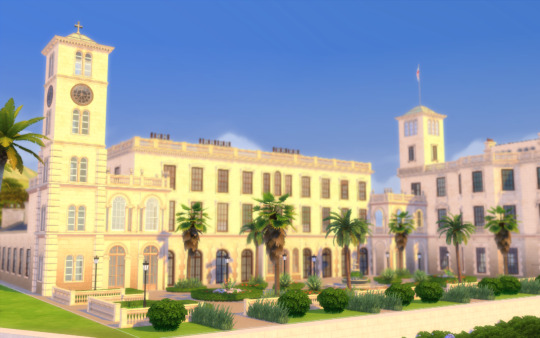

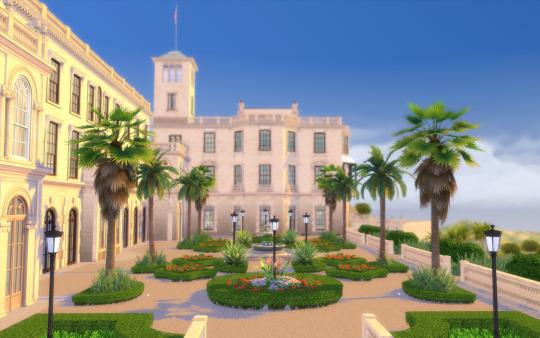

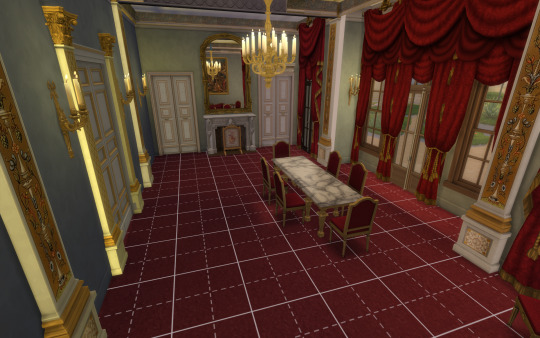
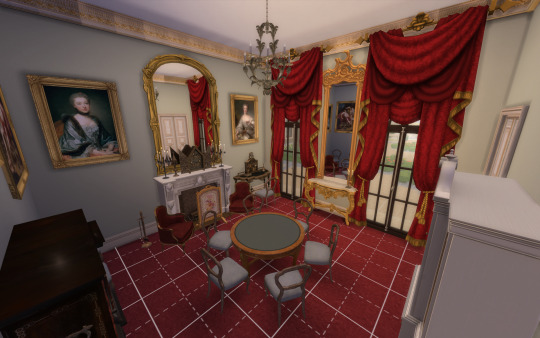

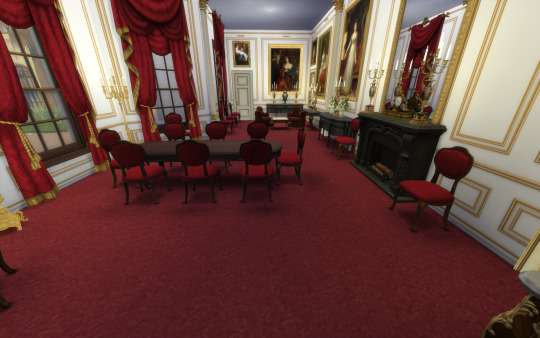
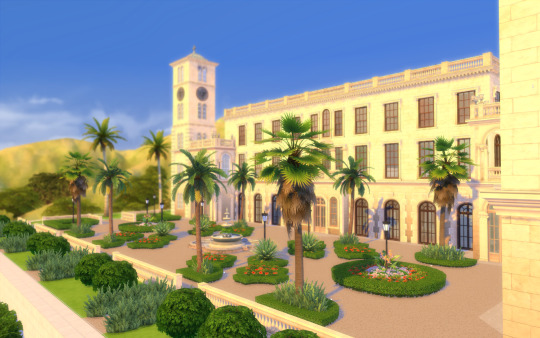
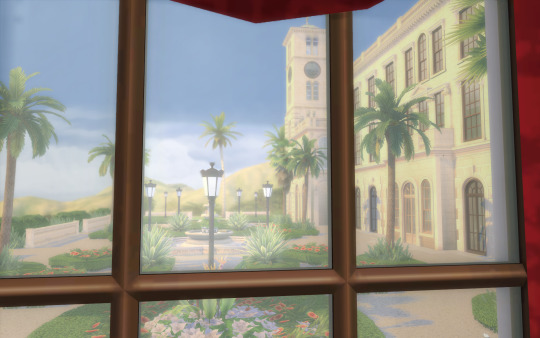

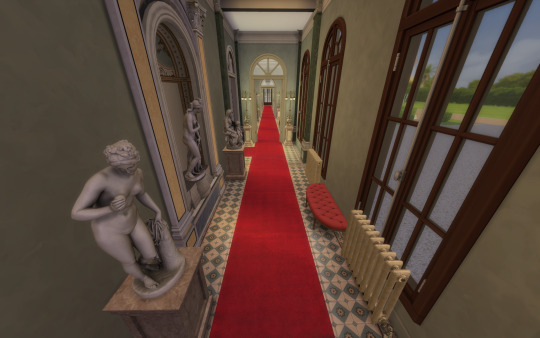
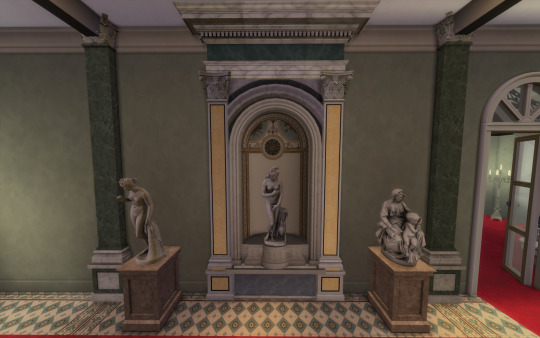
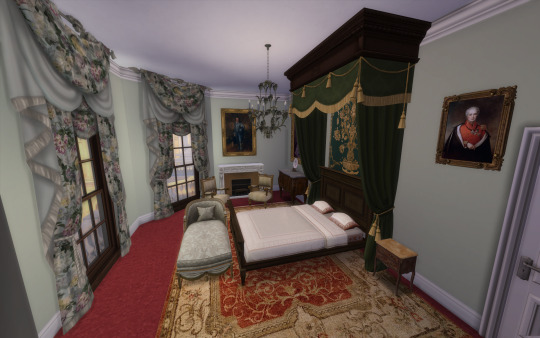
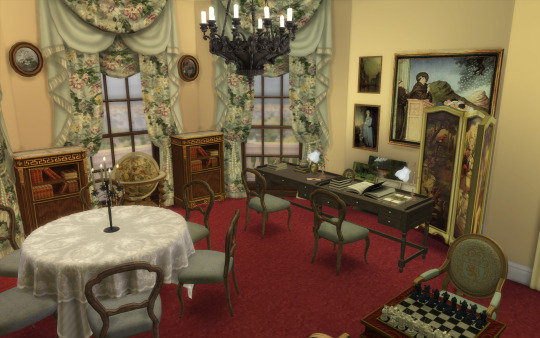
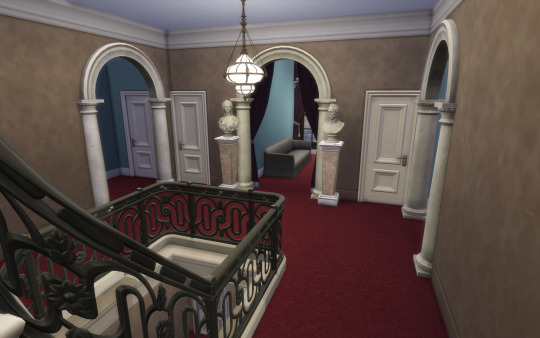
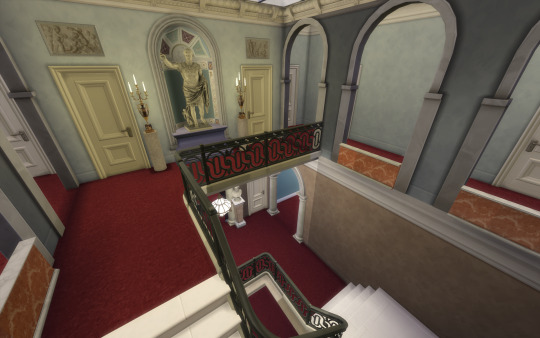

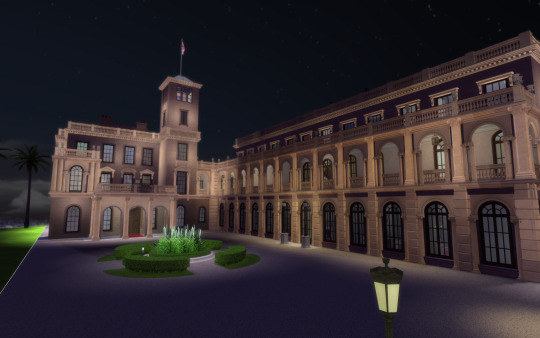


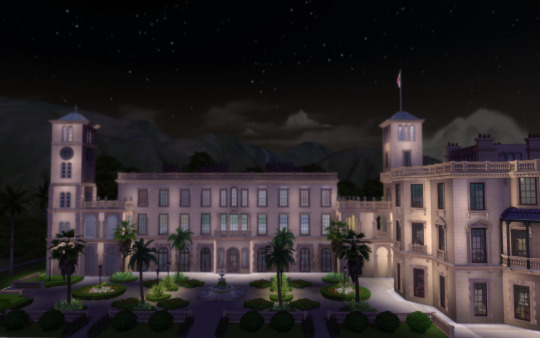
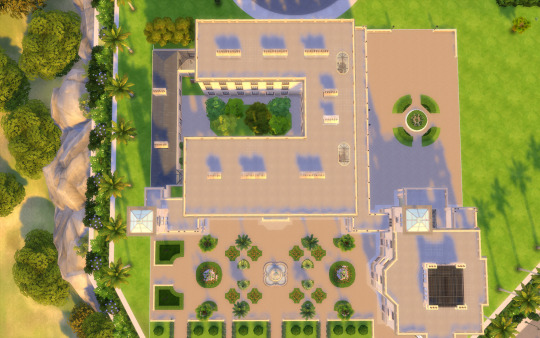


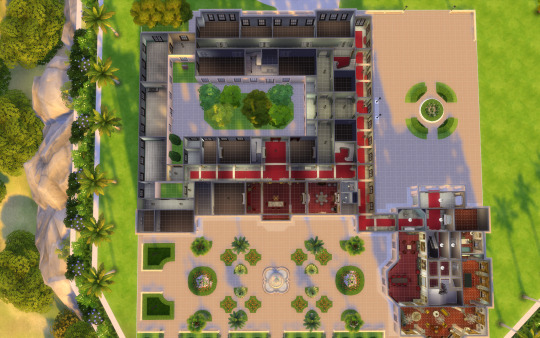
Osborne House
Hace un instante
Hi guys!!
I'm sharing Osborne House . This is the 11th building for my English Collection.
This was also a request from one of my patreons, so I hope it does not desapoint.
History of the house: In 1843 Queen Victoria and Prince Albert were looking for a seaside retreat for their growing family to escape the pressures of London and Windsor. The Osborne estate, then owned by Lady Isabella Blachford, was recommended to them by the Prime Minister, Sir Robert Peel (1788–1850).
The estate was initially leased, then bought in May 1845 for £28,000. As the existing house was too small, an extension was required. Queen Victoria and Prince Albert did not want to be restricted by the Department of Woods and Forests, which was then in charge of all government building, so Prince Albert bypassed the department’s architects. Instead he commissioned Thomas Cubitt (1788–1855), the master builder and developer of much of the Duke of Westminster’s Belgravia estate in London, to advise him.
Cubitt recommended that rather than alter the old house it would be best to build a new one, and proceeded to design it in collaboration with Prince Albert.
OSBORNE TAKES SHAPE
The first phase of building was completed in 1846 with the Pavilion, housing the private rooms of Queen Victoria and Prince Albert and the royal nurseries. The household wing, containing accommodation for members of the royal household who accompanied Queen Victoria to Osborne, was completed in 1848.
After the old house was demolished in 1848, the main wing, completed in 1851, was built on its site, and was linked by a long corridor to the household wing. The main wing was used initially by the royal children. The terraces on the north-east side of the Pavilion and main wing were designed to complement the house and are filled with the signature features of classical Italian gardens.
Neighbouring Barton Manor was thoroughly ‘restored’ by Cubitt and its outbuildings were organised as a model farm. Other building projects included estate cottages and lodges, a dormitory for male servants, and a landing house for the coastguard, with a sea wall along the coastal edge of the estate.
For more info: https://www.english-heritage.org.uk/visit/places/osborne/history-and-stories/history/#:~:text=Queen%20Victoria%20and%20Prince%20Albert,after%20Albert's%20death%20in%201861.
------------------------------------------------------------------------------
This house fits a 64x64 lot and was downsized to fit, so it lost some of its glamour.
It is not furnished except for the state rooms and some private bedrooms (for pictures and reference), as it was requested for that purpose.
Hope you like it.
You will need the usual CC I use:
all Felixandre cc
all The Jim,
SYB
Anachrosims
Regal Sims
King Falcon railing
The Golden Sanctuary
Cliffou
Dndr recolors
Harrie cc
Tuds
Lili's palace cc
Complete list of CC: https://docs.google.com/spreadsheets/d/1ybrxiDhssT3B_4My4KMjm0xNyMDkJ1kNafobQIEJLzQ/edit?usp=sharing
Please enjoy, comment if you like it and share pictures with me if you use my creations!
Early access (public release Sept-30)
Download: https://www.patreon.com/posts/105201540
#sims 4 architecture#sims 4 build#sims4#sims 4 screenshots#sims4play#sims 4 historical#sims4building#sims4palace#sims 4 royalty#ts4#ts4 download#ts4 simblr#ts4 gameplay#ts4 legacy#ts4cc#the sims 4#the sims community#simblr#sims 4#the sims#sims
41 notes
·
View notes
Note
Heyyyyy! Can you do one where Tilly gets her first boyfriend, and Harry really wants to meet him so she brings him home for dinner? And after words Harry is all sentimental that she’s going up and stuff :))))) Love your stories btw
it's here! i put a bit of a spin on it but hope you still like it anyway xx
posh boys with rich girls
stmf one shot #15
when harry dropped tilly off at the prep school gates for the first time nearly fifteen years ago, he didn't realise that he had signed his future self up for having to deal with the notoriously stuck up private school boys.
a/n: this is exactly what i think a casual saturday in the styles house would be like. pizza and wine always. absolutely no 'posh people' food as harry would probably call it.
warnings: fluff, dadrry, teenagers, rich stuck up boys lol

Tilly had convinced herself that she could keep a secret from her Dad for once in her life, because she knew how protective he could be over her. He got scared when she fell from extension as a flyer in cheer- so imagining how dramatic he’d be when he found out about her new boyfriend made her stomach churn a bit. In his eyes, no one would ever be good enough for his girls- apart from him. This was quite a narcissistic way of putting it, he knew that, but he couldn’t help his standards being so high.
“You’re going out with Este again?” He joked. “I didn’t know she got a new car,”
“Yes, haha,” Tilly tried to chuckle, her face going red. “It’s really nice,”
“Can I come outside and see it?”
She shuffled around on the spot, trying to hide the fact that she was lying through her teeth.
“We’re busy, Daddy,” She bit her lip slightly, as he surveyed her guilty face. “We’re already late, I-”
Her face was now a shade of crimson as he pressed the button on the control to zoom in on the image on the security cameras that were on the driveway.
“Wow, didn’t know Este had her haircut, either,”
She tucked a stray hair behind her ear and began to bite one of her nails. “Yeah, looks nice,”
“Matilda Gemma,” He tutted, a line forming in-between his eyebrows. “Are you lying to your Daddy?”
She scorned slightly. “No, I would never lie to you,”
He took her chin in his palm and forced her to look into his eyes. “You know I don’t like it when you lie to me, Tilly Gem,”
She shivered, feeling his cold breath on the side of her neck. “M’not lying, I swear,”
“Why don’t you want me to come out there then, hmm?”
“Okay! I’m lying! Stop looking at me like that, it’s scaring me!” She threw her hands up in defeat.
“Well, is he from school? What’s his name? How long have you been seeing him?” Harry panted, his voice beginning to become shaky. “Why didn’t you tell me this?”
“I knew you’d be funny about it!” Tilly shouted as she began to turn back towards the front porch.
“What do you mean?” Harry protested. “I’m never funny about anything!”
“Right now, look, you’re being weird, stop!” Tilly scolded, one hand on the door handle, the other on her purse.
“You tell him he’s coming round for dinner this weekend, no excuses!” Harry shouted back at her, as she was now halfway down the drive. “I need to meet him!”
---
Henry had gotten with a few rich girls in his time, and had met many of their rich Dads as a result. But none like Tilly Styles. Most girls who went to private school in North London had Dads who worked as plastic surgeons on Harley Street, or were big bosses in corporate in those tall towers in Canary Wharf. She had promised him that her dad was perfectly normal, even if he was one of the most famous men in the music industry. But of-course he was normal to her, he thought, because he was her dad.
“I’m not scared of a man who sings about fruit, I’m not scared of a man who sings about fruit,” He muttered to himself repeatedly as he sat nervously behind the wheel of his BMW. He looked up at the house in front of him, and shuddered slightly. He was rich himself- his father was a CEO at one of the big law firms in Westminster. But he hadn’t realised just how rich Harry Styles really was. He couldn’t understand how Tilly was so humble, having grown up in a house like this. He was probably half a mile away from the front door- fountains at the centre of the drive which a lush collection of cars hid behind, including Tilly’s little Audi TT, which was pretty scratched up as a result of her questionable parking every morning at Sixth Form. He jumped slightly as the hands-free system on his car began to speak.
1 new message from Tils
“we can see you hiding in the car… just come out already he’s really not that bad”
Swearing to himself, he opened the car door and made the long trek down the drive, before finally reaching the sheltered porch and ringing the button on the door. He thought that Tilly almost looked out of place as she opened it. She was wearing a white button up dress, her hair curled into tiny blonde ringlets that rested just below her collarbone.
“Hi,” He smiled awkwardly, struggling to put his hands around her back with a bottle of red wine in one hand, and a bunch of flowers in the other.
“These are so pretty, thank you,” She smiled, as he handed her the bouquet. “I love daisies, they’re my favourite,”
He caressed her back slightly, as he heard a deep laugh come from down the hallway. She took the bottle of wine from his other hand and began to laugh.
“Think Daddy’s already had too much of this,” She chuckled, as she turned and began to walk towards the kitchen. She turned around and noticed he was still stood by the front door.
“Come on, don’t be scared,” She giggled again, dimples beginning to show on her cheeks, gesturing for him to follow her. “He’s just a tall, soppy man,”
Harry still had a glass in his hand as he watched Tilly walk into the kitchen, and stood up from where he was sitting at one of the bar stools. He was wearing a pair of ripped jeans and a loose band t-shirt. It was hard to tell that he was a 42-year-old multi-millionaire just by looking at him.
“Daddy, this is Henry,”
“Hi, Mr Styles,” He tried to smile, but it didn’t quite meet his eyes.
“Harry is fine,” Harry laughed, holding his hand out. “Although, our names are similar, so that could get confusing. You’re the posh version of me,”
Henry tried to laugh as he shook his hand, but it sounded more like a cough. He looked over at Tilly, who was clearly amused by the awkward situation. He noticed all the tattoos littering his left arm. His father had always told him that rich people never got tattoos, because it wasn’t classy. But he had to admit- it looked good on Harry, even if some of them were starting to fade.
“Do you want to sit down?” Tilly asked, trying to break the silence. “The pizza’s going to be here in a minute,”
You had been in the utility room, silently listening in on the conversation whilst waiting putting the finishing touches on the crème brulee which you planned to serve for dessert. It was almost perfect timing, as the timer went off and you strolled into the kitchen, chuckling slightly at the wide-eyed look on Tilly’s new boyfriend’s face.
“Hi, Henry,” You smiled. “I hope he hasn’t scared you,”
“Oh, no, Mrs Styles, it’s just, you have such a nice house and everything,”
Tilly jutted in. “Daddy works hard, too hard,” She giggled, as Harry passed her a handful of 20 pound notes to give to the delivery driver. Henry looked at her wide eyed. His father would never give tips to people in those sort of jobs.
“I hope pizza is okay for you, it’s what we always have on a Saturday night… a Styles family tradition, I guess,”
“No, that sounds lovely,” He smiled. “But we usually have filet mignon on Saturdays,”
You swore you heard Harry scoff, as Henry’s eyes grew even wider when he saw the three of you begin to open the boxes, not even bothering to plate up the food properly.
“So, Henry,” Harry drawled slightly, the wine beginning to go to his head, as he shovelled a slice of pizza into his mouth. “What do your parents do?”
“Well, my Father works in the legal sector, and my Mother well, she spends most of her time at the country club,”
Harry tried not to choke on his food as he held back a laugh. “Wow, clever people jobs,” He snorted slightly. “What are you going to do when you finish your A-Levels?”
“My father says he is going to get me a job, in the legal industry,” Henry replied, you cringing slightly at the received pronunciation with which he pronounced his words.
“Sounds… interesting,” Harry replied, turning at you and rolling his eyes slightly.
---
After a couple of hours of awkward conversation, he had gone home and Tilly had gone back upstairs. You and Harry were still sat at the kitchen counter, as Harry filled up his glass of wine for the 5th time that night. His voice had gotten slow- painfully slower than it usually was, as he told you literally everything he had been thinking for the past few hours.
“I knew Mum was right when she said we should have sent them both to schools up North,” he sighed, fiddling with one of the rips in his jeans.
“What do you mean, lovey?” You asked, not quite understanding what he meant. “They’ve both been fine, here,”
“Ohhhh, my Father works in the legal sector,” Harry mocked, too drunk to notice the room’s newest occupant, who had come downstairs to get herself a glass of water, and was now staring wide eyed at Harry. “Their accents are already too posh for me, I just want them to be normal, and be around normal people, not with a load of rich twats,”
“Harry,” you gestured to your daughter who was now stood still at the opposite side of the room.
“Oh hey, Tils, you okay?”
“-You don’t like him.” She scorned, her brows becoming furrowed in the way that his did whenever he was annoyed.
“Tilly, I- that’s not true-”
“I knew I shouldn’t have brought him round.” She sulked, beginning to walk away, before Harry got up from the counter and blocked her from leaving.
“Hey, look, baby-girl, it’s not that I don’t like him,”
“Then why did you just say that? I heard everything,”
“Look, come and sit down with your Daddy,” he sighed, gesturing for her to follow him to the sofa next to the patio doors. He stroked a hand through a ringlet of her hair as she lent into him.
“I don’t not like him. He seems like a nice guy, he really does. It’s just hard for me to see you growing up, sometimes, because you and your sister are my babies, and it’s really hard for me to let go of you both,” He explained, as she placed her arm around his shoulder. “I can’t really explain it, but that’s just how it is, and I just don’t want you to get hurt, because it would hurt me, too,”
She laughed slightly, almost not believing what he had said. “But Daddy, I’m nearly eighteen,” She laughed. “You’ll have to let me go when I go to uni in September,”
“I know, I know,” he exhaled slowly. “Doesn’t make it easier, though, because you’re still my little girl. I still remember when you were little and I used to take you to ballet lessons,”
Tilly giggled a bit. “I made you wear the tutu, didn’t I,”
“You did,” He laughed, peppering a kiss to her forehead. “And I loved every second of it,”
She fully relaxed into his tall frame, feeling his slow heartbeat underneath her.
“I just don’t want you to get hurt, that’s all,” He sighed. “Boys can be arses, I know that. And you’re the most important thing in the world to me, and it would break me,”
She took a deep breath, nuzzling her chin into his warm chest. “Okay, Daddy,”
“You promise me that no matter what, you know you can tell me anything, and I’ll be there, always. Promise.”
He looked down at her, green eyes identical to his staring back at him. “And fuck filet mignon on Saturdays- what even is that? Pizza is way better.”
---
i had to google what filet mignon actually was lol. looking at the photos it looks absolutely grim. how do people eat that. harry is right. pizza is always better.
if you enjoyed this one shot, i have linked the masterlist to my slipping through my fingers series here!
also thank you to the anon who requested this- please request more i beg you <3
#dadrry#harry styles imagine#harry styles dad#harry styles fluff#stmf#harry styles fanfiction#harry styles
105 notes
·
View notes
Text
Another Wikipedia featured article poll, but it's hand-curated this time. Links and summaries below the cut.
A History of British Fishes is a natural history book by William Yarrell, serialised in nineteen parts from 1835, and then published bound in two volumes in 1836. It is a handbook or field guide systematically describing every type of fish found in the British Isles, with an article for each species.
The Battle of Lake Trasimene was fought when a Carthaginian force under Hannibal ambushed a Roman army commanded by Gaius Flaminius on 21 June 217 BC, during the Second Punic War. The battle took place on the north shore of Lake Trasimene, to the south of Cortona, and resulted in a heavy defeat for the Romans.
Steller's sea cow (Hydrodamalis gigas) is an extinct sirenian described by Georg Wilhelm Steller in 1741. At that time, it was found only around the Commander Islands in the Bering Sea between Alaska and Russia; its range extended across the North Pacific during the Pleistocene epoch, and likely contracted to such an extreme degree due to the glacial cycle.
The Baker Street robbery was the burglary of safety deposit boxes at the Baker Street branch of Lloyds Bank in London, on the night of 11 September 1971. A gang tunnelled 40 feet (12 m) from a rented shop two doors away to come up through the floor of the vault.
On the morning of 6 December 1917, the French cargo ship SS Mont-Blanc collided with the Norwegian vessel SS Imo in the waters of Halifax, Nova Scotia, Canada. The Mont-Blanc, laden with high explosives, caught fire and exploded, devastating the Richmond district of Halifax.
The nature fakers controversy was an early 20th-century American literary debate highlighting the conflict between science and sentiment in popular nature writing. The debate involved important American literary, environmental and political figures.
The Spaghetti House siege took place between 28 September and 3 October 1975. An attempted robbery of the Spaghetti House restaurant in Knightsbridge, London, went wrong and the police were quickly on the scene.
Weird Tales is an American fantasy and horror fiction pulp magazine founded by J. C. Henneberger and J. M. Lansinger in late 1922. The first issue, dated March 1923, appeared on newsstands February 18.
In July 2017, the municipalities of Mahwah, Upper Saddle River, and Montvale in Bergen County, New Jersey, in the United States, opposed extension of an eruv within their borders. An eruv is a land area surrounded by a boundary of religious significance, often marked by small plastic pipes (called lechis) attached to utility poles.
The Makassar kingdom of Gowa emerged around 1300 CE as one of many agrarian chiefdoms in the Indonesian peninsula of South Sulawesi. From the sixteenth century onward, Gowa and its coastal ally Talloq became the first powers to dominate most of the peninsula, following wide-ranging administrative and military reforms, including the creation of the first bureaucracy in South Sulawesi.
65 notes
·
View notes
Text
Nandhini's Legacy AU : Family Masterlist
A directory for all the Magical families that have a role in my Tamil!Potters AU titled Nandhini's Legacy
Nandhini's Descendants

Status: Extant
House Words: The Forests Answer to Us
Residence: House of Serpents (Western Ghats, Tamil Nadu, India); Nagaraja Hall (Gloucestershire, England)
Insignia: Cobra (Lotus Eater), cow, elephant
Colour/s: Green and gold
Head/s: Nithila, daughter of Aathirai (Main); Lily Potter (British branch); ████████ (Italian branch)
A South Asian Magical family from Tamil Nadu, with known branches in the United Kingdom and Italy. The main branch in Tamil Nadu do not carry surnames but as a collective they refer to themselves as Nandhini's descendants or Aditya's descendants. The United Kingdom branch carries the surname Potter. There is little information on the Italian branch. Should the main branch members find themselves in need of a surname for whatever reason, they have their pick of either Nandhini, Aditya, or Potter.
They are known for their unique variant of Parseltongue, commonly known as Potter's Parseltongue in the western world, and their unique connection with snakes. Their estates are known to house an extremely rare type of Magical snake called the Lotus Eater cobra, which appears in their heraldry.
The British branch is also known for their contributions to the country's Potions field and their work in the Magical ceramics industry.
The title of the Head and Heir of the family is primarily passed down the female line but only in secret. In the eyes of the public and the law, they practice patrilineal primogeniture like most other families. This specifically stems from old survival tactics of their ancestors but in the present day, the practice is continued out of respect and fondness of tradition.
They are known to rarely marry outside their South Asian circles, if at all. Regulus Potter ne Black is the first person who is not of South Asian descent to have successfully married into the family.
Through marriage, they are connected to the House of Black.
Notable members: Harry Potter, James Potter, Lily Potter (nee Evans), Regulus Potter (ne Black), Nithila, Lathishri, Kadhir, Iniyan
More information on the family
More information on members (Harry Potter, Lily Evans Potter, others TBP)
The House of Black

Status: Extant
House Words: Toujours pur (Always pure); Birthed by Shadows, Thrive in Darkness
Residence: 12 Grimmauld Place (Borough of Islington, London)
Insignia: Hawk, three crows
Colour/s: Black and maroon
Head/s: ████████ (Main); Sirius Black (British branch)
An ancient and powerful family whose earliest ancestor has been said to have lived as early as pre-Islamic Arabia. According to their own members, the family donned the surname of Black because their ancestors survived and thrived in the shadows of great kingdoms and empires.
In the present time, it said that the House of Black is so massive that their influential reach spans from North Africa all the way to West Asia. Smaller branches have left Asia and Africa and have settled somewhere else in the globe. One of the most notable branches would be their British branch which consists of at least three sub-branches. They are primarily known for their natural talent and extensive knowledge and use of Mind Magic, as well as their open usage and mastery of the Dark Arts.
Despite their fame and influence, little is actually known about the House of Black as a whole. Individual branch seats, heads and members are known, but the House's main seat and head remain a mystery even to the most prolific information hunters in the underground market.
The family's British branch is considered to be one of the country's Sacred Twenty-Eight. The British branch as at least three known sub-branches. The head British branch is historically Egyptian while the other two known sub-branches are historically Levantine (Palestinian) and Persian. The British branch is also notable for their tradition of naming their members after various objects in the night sky, from constellations to stars to natural satellites.
Famously, they rejected Dark Lord Voldemort's offer of allegiance in his first campaign. Orion Black, the Head at the time, has been reported to have told him that their family has "seen more formidable and competent Dark Lords back in the day". However, the family also did not make any moves to stop the Dark Lord's campaign either.
Like the other pureblood families, they generally refused to marry non-purebloods.
Through marriage, they are connected to the Potter family, the Lestrange family, and the Malfoy family, among other families.
Notable members: Sirius Black, Regulus Potter (ne Black), Andromeda Tonks (nee Black; estranged), Bellatrix Lestrange (nee Black), Narcissa Malfoy (nee Black)
More information on the family (TBP)
More information on members (TBP)
Maison Malfoyenne

Status: Extant
House Words: Sanctimonia Vincet Semper (Purity Will Always Conquer); Mountains Bow to River Rapids
Residence: Château de Port du Rhin (Port du Rhin, Strasbourg, France); Nadder Court (Wilton, Wiltshire, England)
Insignia: Mute swan, serpent
Colour/s: Blue and green
Head/s: Cassian Malfoy (Main); Lucius Malfoy (British branch)
A French magical family who trace their origins back to Strasbourg, France and Rhineland-Palatinate, Germany. Historically and traditionally, they are a family of lawmakers, judges, and politicians. Their main branch in Strasbourg is noted to have a hand at shaping the French Magical Parliament to what it is today and members of the family continue to hold significant power in the Magical Parliament themselves.
This tradition continues with the British branch of the family. Armand Malfoy established himself as a pillar of the early Magical British community shortly after arriving in the country and receiving land and a title from King William I. His descendants would go on to become notable members of the governing bodies of the time. The family has produced a certain number of Chief Warlocks and a couple of Supreme Mugwump candidates.
The family has a fondness for establishing their family estates nearby rivers. The main family seat of Château de Port du Rhin is located near the River Rhine, while the British seat of Nadder Court is located near the River Nadder. They are also known for their mastery of water magic.
In the Dark Lord Voldemort's first campaign, Lucius Malfoy had joined the ranks of his Death Eaters but soon defected once his then-fiancee and current wife Narcissa Malfoy nee Black made him choose between her or the Dark Lord.
The Malfoy branch of the family was listed as part of the Sacred Twenty-Eight. Like the other pureblood families, they generally refused to marry non-purebloods.
Through marriage, they are connected to the House of Black, the Lestrange family, and the Lovegood family, among other families.
Notable members: Lucius Malfoy, Narcissa Malfoy (nee Black), Draco Malfoy, Pandora Lovegood (nee Malfoy), Xenophilius Lovegood, Luna Lovegood
More information on the family (TBP)
More information on members (TBP)
Clan Weasley

Status: Extant
House Words: Roots Run Deep
Residence: The Burrow (Ottery St Catchpole, Devon, West Country, England)
Insignia: Rowan, oak
Colour/s: Orange and green
Head/s: Arthur Weasley
Historically a Scottish Highlands Pureblood clan, the Weasleys used to be protectors of a Magical part of the Caledonian Forest before they were driven out of their ancestral home around the time when the local Pureblood clan leaders were forced to hand over their authority to the growing power of the British Ministry of Magic. The Weasleys' portion of the Caledonian Forest was handed over to wandmakers under the Ministry and the Weasleys themselves were forced to relocate further and further away from their ancestral home until they settled in Devon.
The Weasleys' current residence is in Ottery St Catchpole where many of their relatives have also settled. Though they don't have the same power and strength they used to have, they were able to smuggle some saplings from their ancestral home and they have been caring for the trees that grew from those saplings in the years since.
Their Magic is closely tied to the earth and the trees they take care of. Many of them eventually end up in careers where they work closely with wood (carpenters, carvers, broom makers, Quidditch players) or the earth and the creatures that dwell in and on the earth (agriculturists, all sorts of animal caretakers, etc.)
They are also known to have fairly large family units, with their main branch currently having seven children in the youngest generation.
Notable members: Arthur Weasley, Molly Weasley (nee Prewett), William Weasley, Charles Weasley, Percy Weasley, Fred Weasley, George Weasley, Ronald Weasley, Ginevra Weasley
More information on the family (TBP)
More information on members (TBP)
The Park Clan

Status: Extant
House Words: Beware the Spider
Residence: Sangju Park Clan Ancestral Home (Hamchang-eup, Sangju, North Gyeongsang Province, South Korea); Sangjeon Pavilion (Staffordshire Moorlands, Staffordshire, England)
Insignia: Fox, star, spider
Colour/s: White and blue
Head/s: Park Ho-Jung (Main); Aloysius Parkinson (British branch)
[WIP]
Notable members: Aloysius Parkinson, Primrose Parkinson, Pansy Parkinson
More information on the family (TBP)
More information on members (TBP)
#harry potter#harry potter au#mine : nandhinis legacy au#mine : au#tamil potter family#harry james potter#james potter#lily evans potter#jily#jegulily#regulus black#house of black#sirius black#andromeda tonks#bellatrix lestrange#narcissa malfoy#lucius malfoy#draco malfoy#malfoy family#xenophilius lovegood#pandora lovegood#luna lovegood#weasley family#arthur weasley#molly weasley#bill weasley#charlie weasley#percy weasley#fred weasley#george weasley
16 notes
·
View notes
Text
The Man with the Watches
Originally written in 1898 as part of a series of short stories called Round the Fire. Doyle needed money to complete a house he was building in Surrey. Insert your own jokes about actors, bad movies and extensions here.
Rugby is a town in Warwickshire, 83 miles north of London. Yes, it is where the sport of rugby is named after - more specifically Rugby School, a famous private school.
Smoking areas in British trains were gradually abolished from the 1980s, the final ones going in 2005 (GNER and Caledonian Sleeper). I have a 2000 GB-wide timetable showing where smoking was still permitted. In some cases, the trigger for the ban was the move to air-conditioned stock that would result in the smoke circulating in the rest of the train.
A Gladstone bag was a rigid-framed small suitcase that could be opened into two equal halves, named as such due to its used by William Gladstone, four-time British Prime Minister, who would start his final ministry later in 1892.
The guard's van on passenger trains was generally a specific section of a carriage that also had a caged area for carrying luggage, parcels and caged small animals.
Willesden Junction is located in Harlesden, NW London. It no longer has any platforms on the West Coast Main Line, with Avanti and London Northwestern Railway trains going straight past it. Its passenger service today is made up of London Overground Lioness line services from Euston to Watford Junction, Overground Mildmay line services from Stratford to Richmond or Clapham Junction and the Underground's Bakerloo Line from Harrow and Wealdstone to Elephant & Castle. The first and third share the same tracks, while the second operates, on lines shared with freight trains, on separate "High Level" platforms. There is a depot for Overground trains nearby.
Non-gangwayed stock i.e. carriages with no connection between them even for emergency use, continued to be built into the British Railways, with quite a few of the "first generation" of diesel and electric multiple units being built this way. Most got gangways in later refurbishments, but the Class 205 DEMU, bar one example (205205) altered in a refurbishment trial, would carry on without them until final withdrawal in 2004. Most of the survivors then promptly ended up in the hands of heritage railways.
The Bible Society of London was founded in 1804 with the aim of providing affordable Bibles in people's own languages, after the 1800 case of a woman called Mary Jones, who saved up for six years then walked 26 miles to buy a Bible in Welsh. It is still active today.
The London to Rugby line had been widened to four tracks in the 1870s. From west to east, the tracks go: Down (Northbound) Fast - Up (Southbound) Fast - Down Slow - Up Slow. Ergo, you cannot move between two Down trains without a big leap. (https://www.opentraintimes.com/maps/signalling/lec2#LINK_1)
A bunco-steerer is a swindler.
Green goodsmen operated a scam in which people were offered purportedly counterfeit notes printed using stolen plates (so appearing genuine) at a cheap price, being shown actually genuine notes in a bag. During negotiation, the bag was switched for one containing worthless goods, like sawdust or green paper. Having been duped out of real money, the victims were reluctant to report this to police as attempting to purchase fake money was illegal.
Card-sharping is cheating at cards using various means, including cutting bits of cards to mark the ones you would want. Vegas casinos frequently deliberately cut corners off used cards being sold to tourists to prevent them being snuck into their games.
Tammany refers to Tammany Hall, the corrupt political machine that had ran New York City, for much of the 19th century, leveraging support from Irish immigrants by providing them with jobs for example. It had been temporarily ousted from power after the Lexow Commission of 1894-95 into police corruption; to wit, promotions were being sold for large sums of money and officers got that through extracting protection money from brothels etc. However, it would come back in the 1898 elections and retain control with occasional breaks until 1961, when Carmine DeSapio was ousted as its leader. It then lost power and had gone by 1967.
Travelling salespeople would carry samples or models of their products on their trips, sometimes in branded containers. This has largely become a thing of the past, but is still around.
Northumberland Avenue used to have a lot of high-class hotels, but these have mostly gone. Some were taken over for government use for a while, including by the War Office.
"Mary Jane" appears to have been a slang term for a male prostitute; Mary Jane Kelly was the final victim of Jack the Ripper.
#letters from watson#the man with the watches#arthur conan doyle#not sherlock holmes#allegedlyhist#history#factoids
18 notes
·
View notes
Text
Recently UK Prime Minister Rishi Sunak ruled out holding a general election on May 2nd – the date many localities are holding elections.
So now we have a better understanding why there won't be a spring general election.
According to an extensive survey, if elections for the House of Commons were held now, Conservatives might end up with fewer than 100 seats in the 650 seat chamber. By comparison, Conservatives won 365 seats in the last election in December of 2019. Expressions like catastrophe and wipe-out are appropriate in describing the Conservatives' likely electoral fate.
The Conservatives are on course for their worst election result, winning fewer than 100 seats, according to a new poll.
The seat-by-seat analysis gives the Tories 98 constituencies compared with Labour’s 468, giving Sir Keir Starmer a 286-seat majority, the Sunday Times has reported.
The 15,000-person poll, conducted by agency Survation on behalf of Best for Britain, gives Labour a 45% vote share with a 19-point lead over the Conservatives.
Rishi Sunak’s party is on track to win 98 seats with none in Scotland or Wales, according to the research. It also suggests the prime minister is at risk of losing his own constituency, the new Richmond & Northallerton seat in North Yorkshire, to Labour with his lead less than 2.5 percentage points.
The analysis forecasts that Reform UK will come second in seven seats and achieve an overall vote share of 8.5%, just behind the Liberal Democrats on 10.4%
The poll also suggests the Scottish National Party would pick up 41 seats, the Liberal Democrats 22 and Plaid Cymru two.
The London based betting company Smarkets currently gives Labour chief Sir Keir Starmer a 90.91% chance of becoming prime minister after the next election. Incumbent Rishi Sunak gets just 2.50%; that's even behind Conservative Ben Wallace, a former defence chief, who currently is not even in government.
Of the 21 UK general elections since VE Day in 1945, 11 have been held in May or June. Only 1 was held in July with none in August or September. Although there hasn't been an October election since 1974 (the last of four since 1945), my guess is that Rishi Sunak may just wish to get it all over with by that point; on October 25th he will have been PM for two full years.
#uk#uk general election#british politics#parliament#house of commons#rishi sunak#conservative party#keir starmer#labour party#tory wipe-out
6 notes
·
View notes
Text
Police investigating the murders of the wife and two of the daughters of BBC racing commentator John Hunt say they have recovered a crossbow.
Following an extensive manhunt, armed police found suspect Kyle Clifford in Enfield, north London, on Wednesday night. The 26-year-old is still in hospital being treated for serious injuries, Hertfordshire Constabulary say.
Clifford’s older brother, Bradley, is serving a 23-year prison sentence for murder, after he ran over and killed a moped driver who threw a bottle at his Ford Mustang.
Police searching a house in Enfield linked to Bradley Clifford have seized what appeared to be two computer hard drives and two document bags.
Carol Hunt, 61, along with Hannah, 28, and Louise, 25, were described by devastated friends and neighbours as “beautiful souls” and “the loveliest, gentlest family” after they were discovered with fatal wounds at their home in Bushey.
Clifford is known to have served briefly in the British Army.
During the manhunt, police warned the public not to approach him.
3 notes
·
View notes
Text
let me try and précis my current status:
yesterday I travelled into london to croydon to hear a piece I wrote premièred. the concert was very good, but the performance of my piece was by far and away the shakiest; the conductor, a friendly acquaintance of mine who had commissioned me, apologised & promised to do it justice on another occasion.
now on the journey down to london owing to train strikes I had travelled partly by rail replacement bus. all told, the journey took about three hours, including a layover in royston where I walked into town and bought fish and chips from an outfit operating out of a building formerly serving as a buttery for king james the first and sixth (the town having been extensively patronised by him for its excellent hunting).
another ingredient in the mix is that I had been hoping to attend a festival in hackney earlier in the day, and had arranged to stay over chez un ami also attending; for reasons largely relating to my having recently had pneumonia and finishing fallout: new vegas very late the night before, this failed to come to fruition. as regarded my options for overnight accommodation after the concert, barring quick-witted organisation I was left with one option: travel north to my parents’ house
my parents being away from home, this seemed a more attractive option than it otherwise might have; the journey, though long, was more feasible than an attempt to return to cambridge, given the late hour and strike action; further, there was a coat I had had to leave on my last visit which I have been missing for a while, so I stood to benefit materially.
however, partly due to the underwhelming première, and partly to the overwhelming callousness native to professional classical musicians - to which I was exposed, following the gig, at a local pub - I ultimately left croydon in an unhappy state, and felt a strong resentment towards the idea of travelling by train again through a city from which I felt totally alienated. parting ways with my co-commissionee at london bridge station, I therefore - in part because I had to leave the station to find the entrance to the underground - resolved to walk through southwark; to inhabit and come to know it rather than leaving it a faceless point on my journey.
my meandering route took me past southwark cathedral, past the site of the original globe theatre and its reconstruction - I spent a long time fruitlessly searching for the rose theatre in the same area - past Tate modern, and onto the beach of the bank of the thames. Here I resolved to explore more fully a rare and extraordinary thing: a totally secluded area in the middle of london. to aid in my investigation’s fullness (as experienced by me), I decided to take another bump of ketamine (having taken two shortly before the concert - I really do recommend it).
in an altered state I wandered along the river’s bank for some time, frequently picking up interesting rocks or other items of interest. london lies on clay and chalk; I took loose lumps of chalk with me. presently I began to engage in a sort of sonic exploration of the area: finding a short length of metal scaffolding, with a child’s selfishness I struck it against the stones of one of the many bridges over the river, over and over again, for the pleasure of hearing the sound it made. I found a totally rusted boat hook (at least I assume it is a boat hook; it seems the most likely hook-shaped piece of metal to find by a river), which I cleaned to the best of my ability and used to break a cool rock down into more manageably-sized pieces, one of which I took with me. coming to an area inaccessible and watery, I turned back and retraced my steps, noticing that the tide had begun to rise.
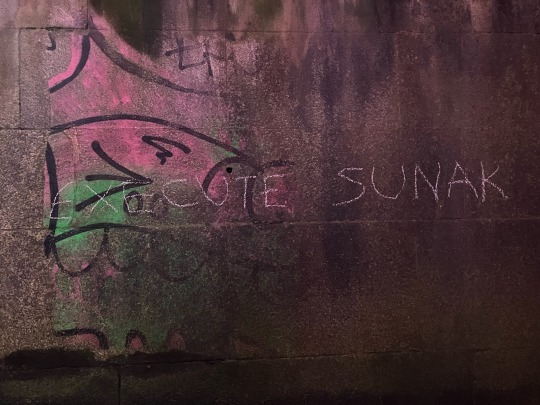
this whole excursion had taken over an hour, and it was now going to be infinitely less practical to find transportation routes back to my parents’ house.
careless of this, I walked towards st. paul’s cathedral. it is a building I dislike; it speaks to every disastrous development in cruelty and arrogance of the 17th century, and I have expressed in writing before a desire to see it blown up. taking therefore my lump of genuine thames chalk, I scrawled on its stone “THIS BUILDING SCHEDULED FOR DEMOLITION 2026”. about two minutes after this the rozzers pulled up some 100 feet from where I stood; although seized with a paranoia that they might be here for me (i had been, in fact, adorning numerous surfaces with the legend “EXECUTE SUNAK”), I kept my casual gait and walked north towards st. paul’s tube station, stopping on the way to touch some statues in paternoster square. I disposed of the chalk on my way into the station.
google maps now advised me that my surest route to my parents’ house was to take a coach from marble arch. on discovering it would cost me in the neighbourhood of £16, I left the area in disgust: money isn’t real when you use contactless payments in the fare zones.
there passed, to quote the poet, a dreary time. one of my least favourite things to do is walk through central london, yet here I was. it is a disgusting place. my plan now took on this shape: I would head to euston station, and wait for the first train out to watford junction. this meant I had a lot of time to kill.
on great portland street, two things out of the ordinary happened in quick succession: a fox passed close in front of me (always a lucky and happy event), and the front panel of a bus nearby fell out of place. I told this to the driver, and he gave me a lift, free of charge, about five minutes in the wrong direction. it was agreeable to be sitting in a warm vehicle, at any rate, and I was touched by the gesture.
upon arriving at euston, I discovered that - due again to the strike - the fast trains north were not running. the station opened fifteen minutes after I arrived; I sat at the public piano and sombrely, sorrowfully played the piece that had brought me to london in the first place.
checking google maps again, I had learned that my swiftest route to my destination at this juncture was to ride the northern line to edgware and take a bus the rest of the way; this I did, slipping in and out of sleep for the duration of the journey.
when I - finally - walked through the door of the empty house, I discovered that my room had been filled with odds and ends such that it would have been impossible to sleep in it; this presumably because my parents thought that following what I suffered at their hands in december I would be unlikely to return any time in the near future. I write this therefore from their bedroom. provided I can leave here before their return, and leave the room in a state unlikely to draw their attention, I should be laughing.
the whole adventure has been, on the whole, quite a good argument for staying at home and never going anywhere
2 notes
·
View notes